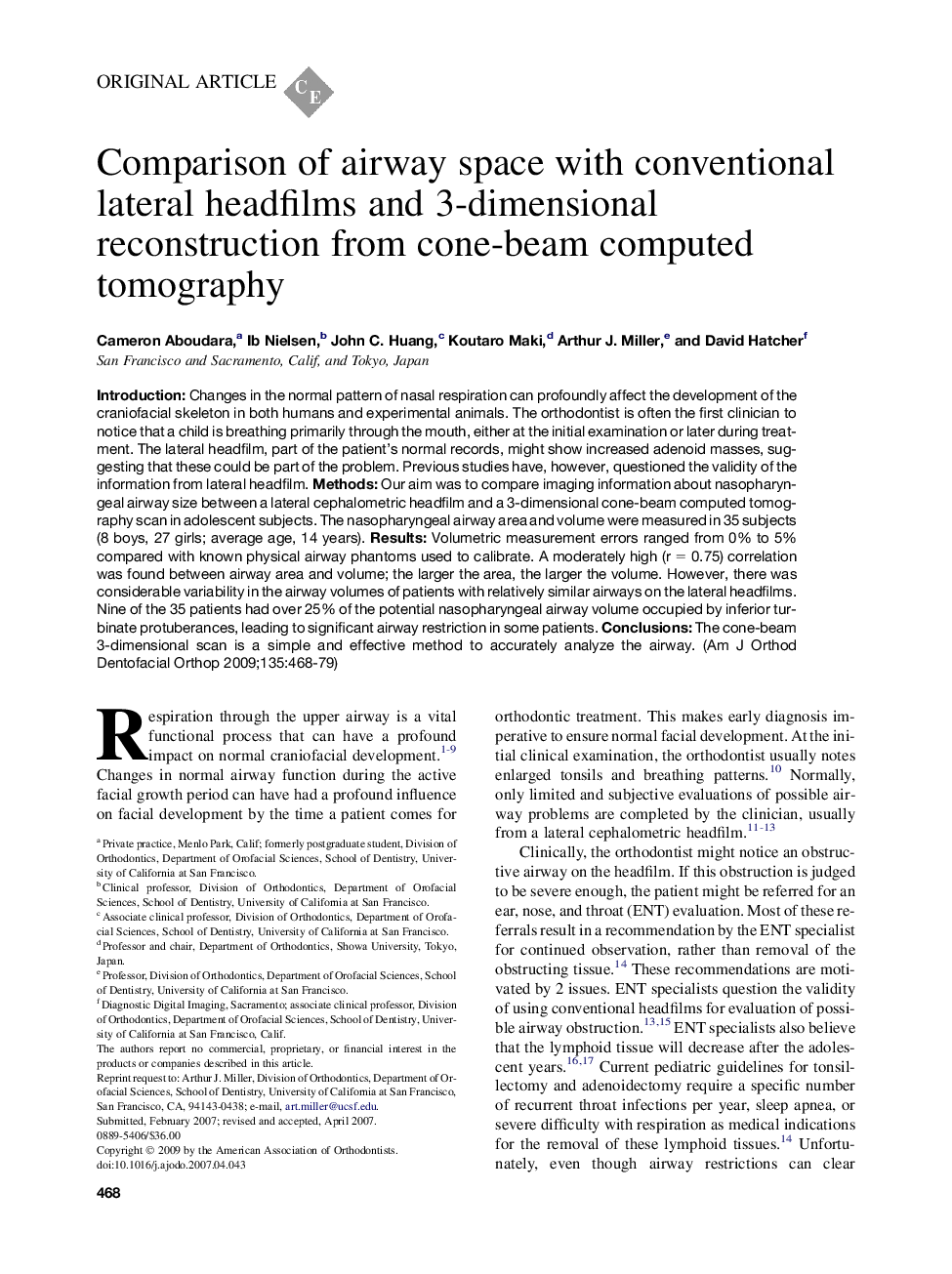| Article ID | Journal | Published Year | Pages | File Type |
|---|---|---|---|---|
| 3119928 | American Journal of Orthodontics and Dentofacial Orthopedics | 2009 | 12 Pages |
IntroductionChanges in the normal pattern of nasal respiration can profoundly affect the development of the craniofacial skeleton in both humans and experimental animals. The orthodontist is often the first clinician to notice that a child is breathing primarily through the mouth, either at the initial examination or later during treatment. The lateral headfilm, part of the patient's normal records, might show increased adenoid masses, suggesting that these could be part of the problem. Previous studies have, however, questioned the validity of the information from lateral headfilm.MethodsOur aim was to compare imaging information about nasopharyngeal airway size between a lateral cephalometric headfilm and a 3-dimensional cone-beam computed tomography scan in adolescent subjects. The nasopharyngeal airway area and volume were measured in 35 subjects (8 boys, 27 girls; average age, 14 years).ResultsVolumetric measurement errors ranged from 0% to 5% compared with known physical airway phantoms used to calibrate. A moderately high (r = 0.75) correlation was found between airway area and volume; the larger the area, the larger the volume. However, there was considerable variability in the airway volumes of patients with relatively similar airways on the lateral headfilms. Nine of the 35 patients had over 25% of the potential nasopharyngeal airway volume occupied by inferior turbinate protuberances, leading to significant airway restriction in some patients.ConclusionsThe cone-beam 3-dimensional scan is a simple and effective method to accurately analyze the airway.
